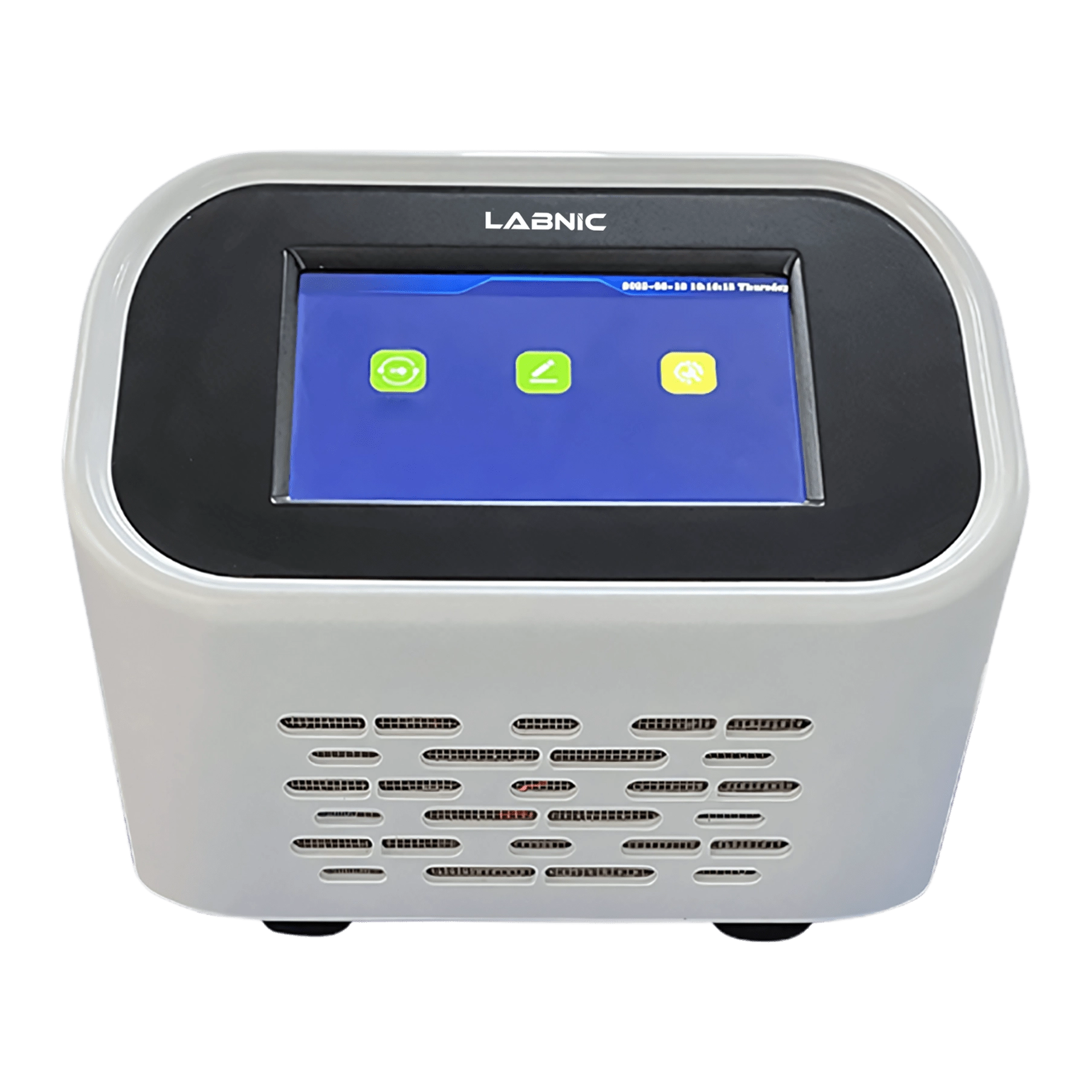
PCR Thermal Cycler LBN-PT151 is a versatile device designed for error-free use in laboratories. It has proven dependability and advanced temperature control technology, as well as rapid cooling and heating functions. The 96-well thermal cycler has a 0.2ml block configuration, a reaction volume range of 10 to 200µl, and blocks that are controlled by multiple Peltier elements and used to precisely optimize PCR temperature. The improved 7-inch responsive touch-screen interface makes it easier to program and saves time.
| Capacity | 96-well |
| Reaction Volume | 10 – 200 µl |
| Tube Type | 96 × 0.2ml PCR plate; 8 × 0.2ml PCR tube |
| Block Temperature Range | 4℃ - 105℃ |
| Heat Lid Temperature Range | 30℃ - 110℃ |
| Temperature Accuracy | ≤0.5℃ |
| Temperature Uniformity | ≤1℃ |
| Gradient Range | 30 - 99℃ |
| Temperature Differential Range | 1 - 42℃ |
| Program | 30 steps, 99 cycles |
| Display Resolution | ±0.1℃ |
| Display | 7” LCD |
| Power Supply | 110 – 220V, 50/60Hz |
| Dimension (L × W × H) | 398 × 280 × 257 mm |
| Package Dimension (L × W × H) | 495 × 380 × 380 mm |
| Net Weight | 11 Kg |
| Gross Weight | 17 Kg |
PCR Thermal Cyclers are used for gene amplification by polymerase chain reaction in medical institutions, clinical gene amplification testing laboratories to meet requirements in scientific research centers, universities, various clinical laboratories etc.
PCR Thermal Cyclers are used for gene amplification by polymerase chain reaction in medical institutions, clinical gene amplification testing laboratories to meet requirements in scientific research centers, universities, various clinical laboratories etc.
Most Frequently Asked Questions
1. How does a PCR thermal cycler work?
Ans. It works by repeatedly heating and cooling samples to specific temperatures, enabling DNA denaturation, primer annealing, and extension to create multiple copies of the target DNA sequence.
2. What are the main components of a PCR thermal cycler?
Ans. The main components include a thermal block to hold samples, a heating/cooling system for temperature changes, and a control panel for programming cycling parameters.
3. Why is precise temperature control important in a PCR thermal cycler?
Ans. Precise temperature control ensures accurate DNA amplification by maintaining optimal conditions for denaturation, annealing, and extension during the PCR process.
4. How long does a PCR reaction take?
Ans. A standard PCR reaction usually takes 1 to 3 hours, depending on the number of cycles, annealing temperature, and type of DNA polymerase used.
5. How many samples can be processed at once in a PCR thermal cycler?
Ans. The capacity depends on the model, but most thermal cyclers can hold 24, 48, or 96 reaction tubes in a single run.
PCR Thermal Cycler LBN-PT151 is a versatile device designed for error-free use in laboratories. It has proven dependability and advanced temperature control technology, as well as rapid cooling and heating functions. The 96-well thermal cycler has a 0.2ml block configuration, a reaction volume range of 10 to 200µl, and blocks that are controlled by multiple Peltier elements and used to precisely optimize PCR temperature. The improved 7-inch responsive touch-screen interface makes it easier to program and saves time.